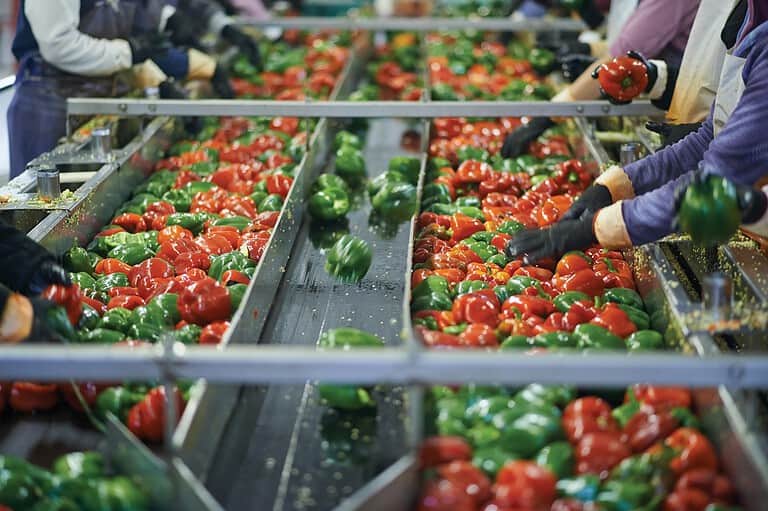The Future of Food Engineering: Innovations and Possibilities
The world of food engineering is constantly evolving, and the future looks brighter than ever. With the help of technological advancements, food engineers are finding innovative ways to improve food production, packaging, and preservation while ensuring food safety and sustainability.
From lab-grown meat to vertical farming, the future of food engineering is full of exciting possibilities. The incorporation of several disciplines into the field of food engineering has led to the development of new techniques and technologies that could revolutionize the way we produce and consume food.
According to a report by the United Nations, the world’s population is expected to reach 9.7 billion by 2050, which means that food production needs to increase by 70% to meet the growing demand. Food engineers are rising to the challenge by developing new methods of food production that are more efficient and environmentally friendly.
Current Status of Food Engineering
Food engineering is an interdisciplinary field that applies engineering principles to food processing, preservation, packaging, and distribution. It plays a crucial role in ensuring that the food we consume is safe, nutritious, and of high quality. The current status of food engineering is influenced by various factors, including technological advancements, changing consumer preferences, and global food challenges.
Challenges
One of the major challenges facing the food engineering industry is the need to produce more food to feed a growing population. According to the United Nations, the global population is projected to reach 9.7 billion by 2050. This means that food production will need to increase by at least 70% to meet the demand. Additionally, there is a need to reduce food waste and loss, which accounts for about one-third of the food produced globally.
Another challenge is the need to produce food sustainably. The food industry is a major contributor to greenhouse gas emissions, water pollution, and deforestation. Therefore, food engineers need to develop sustainable food processing methods that minimize the environmental impact of food production.
Opportunities
Despite the challenges, there are also many opportunities for food engineers to innovate and improve the food industry. One opportunity is the use of new technologies such as artificial intelligence, automation, and blockchain. These technologies can help improve food safety, reduce waste, and increase efficiency in the food supply chain.
Another opportunity is the development of plant-based and cell-based foods. As more consumers become concerned about the environmental impact of animal agriculture and the health implications of consuming meat, there is a growing demand for plant-based and cell-based alternatives. Food engineers can play a crucial role in developing these products that are not only sustainable but also nutritious and tasty.
In conclusion, the current status of food engineering is characterized by both challenges and opportunities. Food engineers need to continue to innovate and develop sustainable food processing methods to meet the growing demand for food while minimizing the environmental impact of food production.
Emerging Technologies in Food Engineering
As the food industry continues to evolve, new technologies are emerging that are changing the way food is grown, processed, and distributed. These technologies are helping to improve food safety, increase efficiency, and reduce waste. Here are some of the most promising emerging technologies in food engineering:

Nanotechnology
Nanotechnology is the science of manipulating matter on an atomic and molecular scale. In the food industry, nanotechnology is being used to create new food packaging materials that are more durable and can better protect food from spoilage. Nanoparticles are also being used to develop new food additives that can improve the taste and texture of food, as well as enhance its nutritional value.
One of the most promising applications of nanotechnology in the food industry is the development of nanosensors that can detect foodborne pathogens. These sensors can be embedded in food packaging materials and can quickly detect the presence of harmful bacteria, viruses, and other contaminants.
Robotics
Robotics is another emerging technology that is having a significant impact on the food industry. Robots are being used to automate many tasks in food processing and packaging, which can help to improve efficiency and reduce the risk of contamination.
One of the most promising applications of robotics in the food industry is the development of autonomous harvesting machines. These machines can pick fruits and vegetables with greater speed and accuracy than human workers, which can help to reduce labor costs and increase productivity.
Artificial Intelligence
Artificial intelligence (AI) is another emerging technology that is transforming the food industry. AI-powered systems are being used to optimize food production processes, improve food safety, and reduce waste.
One of the most promising applications of AI in the food industry is the development of predictive analytics systems that can forecast demand for food products. These systems can help food producers and distributors to better manage their inventory and reduce waste.
Another promising application of AI in the food industry is the development of smart food processing equipment that can adjust its operations based on real-time data. This can help to improve efficiency and reduce the risk of contamination.
Sustainable Food Engineering
The future of food engineering is focused on sustainability. As the world’s population grows, it is important to ensure that food production is environmentally friendly and efficient. Sustainable food engineering involves reducing waste, using renewable resources, and developing green processing methods.
Green Processing
Green processing involves using environmentally friendly methods to produce food. This includes using renewable resources, reducing energy consumption, and minimizing waste. One example of green processing is using plant-based packaging materials instead of plastic. Plant-based materials are biodegradable and do not contribute to pollution. Another example is using renewable energy sources like solar and wind power to run food processing facilities. This reduces greenhouse gas emissions and helps to combat climate change.
Waste Reduction
Waste reduction is an important part of sustainable food engineering. Food waste is a major problem around the world, with millions of tons of food being thrown away each year. To combat this, food engineers are developing new methods to reduce waste. One method is using food waste to create new products. For example, food waste can be used to create biofuels or fertilizer. Another method is using precision farming techniques to reduce food waste. Precision farming involves using technology to monitor crops and optimize yields. This reduces the amount of food that goes to waste.
Overall, sustainable food engineering is the future of the food industry. By reducing waste, using renewable resources, and developing green processing methods, food engineers can help to create a more sustainable and environmentally friendly food system.
Future Trends in Food Engineering
Personalized Nutrition
Food engineering is moving towards personalized nutrition, which involves tailoring food products to meet the specific nutritional needs of individual consumers. This approach requires the use of advanced technologies such as artificial intelligence, machine learning, and big data analytics to analyze large amounts of data on individual consumers’ health, lifestyle, and dietary preferences. By leveraging these technologies, food engineers can develop food products that are optimized for each consumer’s unique nutritional requirements.
3D Printing
Another trend in food engineering is the use of 3D printing technology to create customized food products. This technology allows food engineers to create complex food structures and textures that are difficult to achieve using traditional food processing methods. 3D printing also offers the potential to reduce food waste by enabling the creation of food products in precise quantities, minimizing excess production.

Food Safety
Food safety is a critical issue in the food industry, and food engineering is playing an increasingly important role in ensuring the safety of food products. One emerging trend in this area is the use of blockchain technology to track and trace food products throughout the supply chain. This technology enables food engineers to monitor the safety and quality of food products from farm to table and to quickly identify and address any safety issues that arise.
In addition to blockchain technology, food engineers are also exploring the use of other advanced technologies such as sensors, robotics, and data analytics to improve food safety. For example, sensors can be used to monitor food products for contaminants, while robotics can be used to automate food processing and reduce the risk of contamination from human handling. Overall, the future of food engineering is exciting and full of possibilities. By leveraging advanced technologies and innovative approaches, food engineers are poised to transform the food industry and create a more sustainable, nutritious, and safe food supply for consumers around the world.
Conclusion
In conclusion, the future of food engineering is full of exciting innovations and possibilities. With advancements in technology, food engineers are able to create new products and processes that are more efficient, sustainable, and healthier than ever before. From 3D printing to nanotechnology, the possibilities for food engineering are endless. The industry is also expected to focus on developing more plant-based alternatives and reducing food waste.
Additionally, personalized nutrition and functional foods are expected to become more prevalent, allowing individuals to tailor their diets to their specific needs. As the food industry continues to grow and evolve, food engineers will play a crucial role in developing new solutions to meet the changing needs of consumers. It is an exciting time for food engineering, and we can’t wait to see what the future holds.






